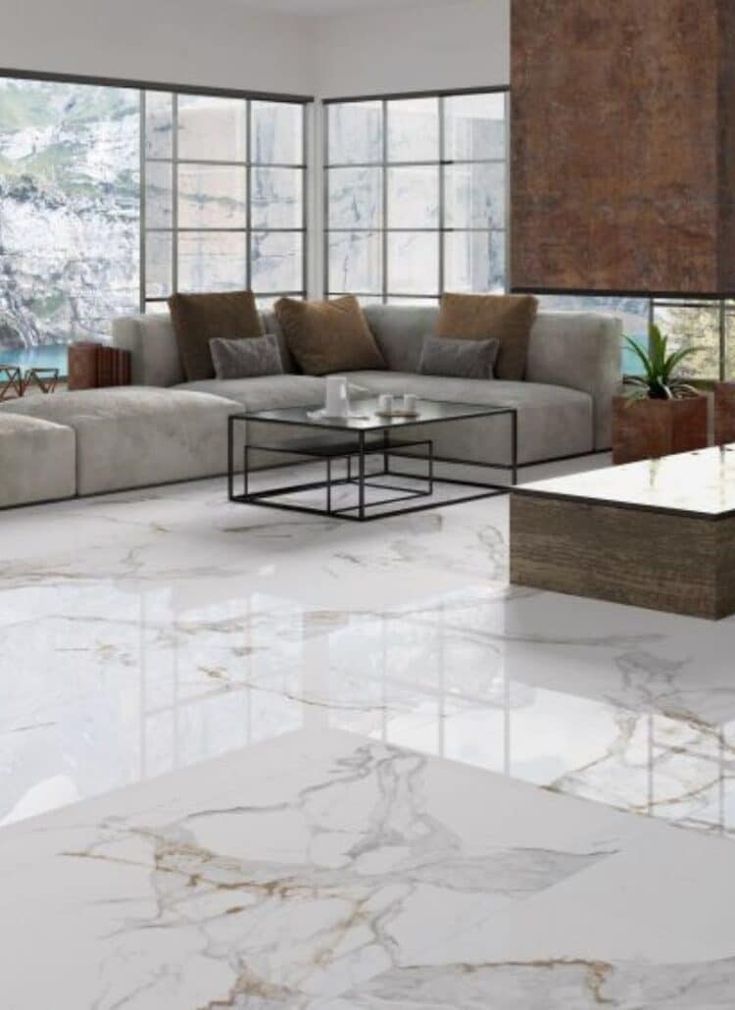Flooring
7 Flooring Trends Designers Are Moving Away From in 2025
Flooring is often one of the top priorities for homeowners when it comes to renovation projects. It serves as the foundation of any well-designed home, setting the tone for both style and functionality. But, just like paint colors and furniture choices, flooring trends evolve over time. What was once considered stylish can quickly become outdated.
Today, flooring trends are heavily influenced by sustainability and durability, in addition to design aesthetics. Research by Houzz indicates that resilient materials such as vinyl, hardwood, and ceramic or porcelain tiles are dominating the market due to their versatility and durability. Their 2025 U.S. Kitchen Trends Study also found that nearly one in six homeowners opted for eco-friendly flooring during their kitchen renovations.
Many flooring styles, such as high-gloss tiles and predictable gray planks, are falling out of favor in favor of fresh, modern alternatives. So, which flooring trends should be left behind in 2024? We spoke to interior designers and flooring experts to identify the outdated materials, colors, and styles, and the alternatives you should consider for a timeless, contemporary home.
- Glossy and Shiny Finishes
Polished floors, whether glossy tiles or ultra-shiny timber, are officially out of style in 2025. These finishes are becoming less popular due to their impracticality and high-maintenance requirements. Matte and textured finishes, which offer a more organic, practical, and easy-to-care-for alternative, are gaining traction. “Matte and brushed wood flooring have become highly desirable,” says Fredrik Alfredsson, CEO of Bjelin. “These finishes highlight the wood’s natural grain and are much easier to maintain.”

Courtesy of Pinterest
- Cookie-Cutter Styles
Personalization is key in 2025 home design. Homeowners are moving away from mass-produced, uniform flooring in favor of unique, customized options. “Cookie-cutter designs are seen as uninspired and lack character,” says Anthony Scott, global product director at Havwoods. “Eclectic designs, which mix bold patterns and materials, create visually interesting spaces.” For wood floors, this means experimenting with herringbone, chevron, or basketweave patterns, or opting for wide, long planks to create a seamless flow throughout the home.
Courtesy of Pinterest
- Synthetic Materials
Natural materials are increasingly sought after over synthetic options, driven by both health and environmental concerns. “Nearly three-quarters of homeowners who choose sustainable flooring are motivated by long-term cost-effectiveness and environmental impact,” says Houzz economist Marine Sargsyan. Wood floors with natural grains remain popular, but other eco-friendly materials like cork, linoleum, and reclaimed wood are also in demand. “Sustainable, FSC-certified hardwoods are trending in 2025,” says Mindy Kelson O’Connor, principal of Mindy Kelson O’Connor Architecture and Interiors.
Courtesy of Pinterest
- Cool Wood Tones
Cool, gray-toned wood floors, once staples in modern homes, are now being replaced by warm, neutral hues. “Honey brown and rustic blonde tones are making a comeback,” says Vester. Lighter woods like white oak and ash still dominate Scandinavian-inspired interiors, offering a neutral base, while darker wood tones like walnut and mahogany are becoming popular for adding depth and luxury to space - Dull Gray Carpets
Gray carpets, once popular, are now being replaced with warmer neutrals. “Homeowners are gravitating toward cozy, inviting shades like oatmeal, taupe, and soft linen,” says Mohawk’s Hannah Nelson. This shift towards warmer tones reflects the growing trend of bringing the outdoors inside, with a particular rise in green hues in home decor. - Boring Beige Rugs
Minimalistic beige rugs are on the way out. Bold colors, rich textures, and expressive patterns are the focus for 2025. “Red has surged in popularity recently, and we’re likely to continue seeing it, especially on floors,” says Ben Hyman, CEO of Revival Rugs. Textured rugs, like those handwoven with materials such as wool and jute, are creating more dynamic and personalized floors.
Courtesy of Pinterest
- Short-Term Fixes
Sustainability is more important than ever. “Consumers today are looking for long-lasting, eco-friendly options that won’t contribute to waste,” says Hyman. Homeowners are increasingly choosing flooring made from recycled materials or sustainably sourced wood. Innovative products like Woodura flooring, which utilizes recycled waste, are setting new standards for both environmental responsibility and quality.
As we move into 2025, it’s clear that flooring trends are shifting toward natural materials, timeless designs, and eco-conscious choices. Embrace the change to ensure your home feels modern, sustainable, and enduring.